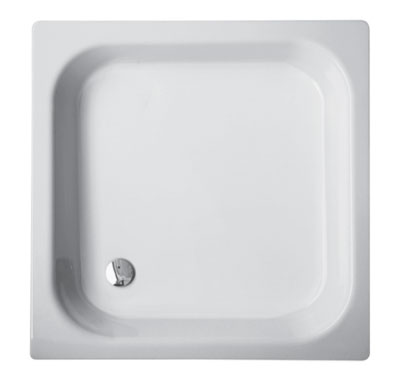several problems:
1 - dining room, the exterior walls are 25cm thick in large rectangular freestone and are insulated inside by a 1cm plate on which is glued polystyrene with a thickness of 4cm (it seems to me that it is called 10 + 40), therefore, on the facade is the front door, on each side of the door there are at the bottom plates of 10 + 40 a small opening with a mini round grid of 'about 5 or 6 cm in diameter, like the round which is visible in this photo, http://www.hellopro.fr/images/produit-2 ... 206958.jpg
question:
1 A - is the insulation good with 10 + 40?
1 B - the two holes made at the bottom of the 10 + 40 plates, which go through the insulation, but not the 25 cm stone wall, are these holes silly or not? (compared to insulation)
2 - bathroom,
a shower in the corner of the house having two sides with glass doors and two sides with tiling laid on water-repellent plaster tiles in light blue on the drawing, about 8 or 10cm thick and protruding from each side the shower of about 10cm,
between these tiles and the 25cm thick exterior wall in yellow in the drawing, there is a small air gap,
and the shower tray in red in the drawings was like this

the shower seems to have created humidity in the wall in waterproof plaster tiles, and in the exterior wall of the house, visible in black spray on the drawing
the rest of the bathroom walls in contact with the exterior walls of the house are insulated with 10 + 40, dark green lines on the drawing,
the bathroom is not ventilated, there was a hole at the top of the shower made in the wall with a grid on each side, but in winter the cold air fell directly on the person in the shower, I therefore blocked it, it was useless
since then, the shower has been replaced by an integral shower (the 4-sided shower, 2 glass walls + 2 in a kind of plastic)
2 A - the exterior wall of the house is damp, you can see it when you are outside, I think of condensation between the exterior wall of the house and the plaster tiles, since there is no insulation placed between, the problem being clearly in the area of the old shower, I imagine that when we took a hot shower, the plaster wall would heat up, then with the outside wall cold, humidity or condensation (something like that) formed between the two
What do you think ?
2 B - to correct this defect, I would say that you have to remove the plaster tiles, then dry the exterior wall well, to finally put back water-repellent plaster plates on which polystyrene is glued to make insulation, that in do you think?
thanks for the answers .

